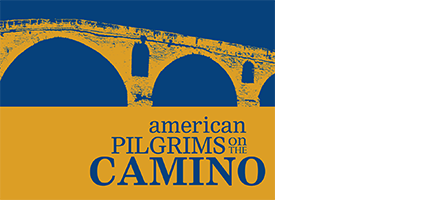Camino Guidebooks and Apps
Whether you’re just in the dreaming stage, or you are ready to strap on your backpack, these guidebooks and apps will help you plan your Camino and keep you on target while on the Way.
We’ve also got some advice on the pros and cons of apps versus guidebooks so you can decide which works better for you.
If you haven’t yet fully committed to your route, you may also want to check out our route overview page, which provides high-level information on the most popular Camino routes.
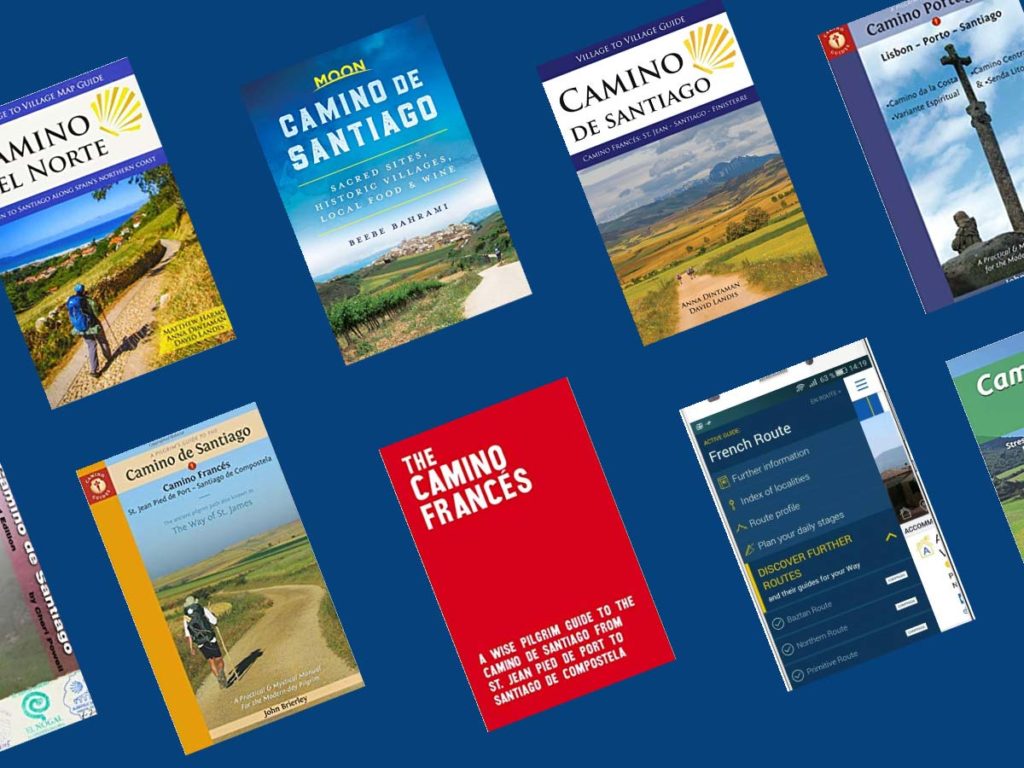
(We strive to provide you with a full range of choice and don’t advocate for any one author or app developer over another)
Should You Take a Guidebook or Use an App on the Camino?
Each media type has its strengths and weaknesses and you can take both, so it’s not a binary choice. Both guidebooks and eBooks include some way of tracking stages with mileage and elevation. They have lodging listings and indicate towns with services (such as pharmacies and grocery stores). They also offer official route alternatives.
But here are some pros and cons for each media type.
Physical Camino Guidebooks
- Pros: The guidebooks (both physical and eBooks) do a good job of providing historical and cultural context with advice on worthwhile side trips to museums, churches and ancient sites. Physical books are much easier to read in full daylight than a phone screen and are easily skimmable.
- Cons: The guidebooks (both physical and eBooks) recommend stages, which while useful, can create choke points on the trail and may not be right for your pace. Physical books add weight.
eBook Camino Guidebooks
- Pros: No weight and (usually) contain all the content of the physical book.
- Cons: Some guidebooks have not been well-formatted for the Kindle app, making it difficult to search and bookmark. Check the book’s samples and reviews before purchasing.
Camino Apps
- Pros: Most offer real-time (and offline) mapping. They often have more thorough or up-to-date albergue listings. You can use the communication features to Whatsapp, call or email lodgings using an easy link from the app. Some offer the ability to create custom stages. They cost less than a guidebook.
- Cons: The user interface can take some getting used to. They lack cultural, culinary and historic information.
Jump down to Camino guidebook series
Jump down to niche guidebooks
Jump down to Camino apps
Camino de Santiago Guidebook Series
All of the following guidebooks have suggested stages, maps, elevation profiles, accommodation and town services info and some cultural and historical context.

A Pilgrim’s Guide: Various Routes, John Brierley
Most of the guides have recent (2022-2024) editions.
Brierley was the “grandfather” of Camino guidebook authors and he’s been producing guides and maps for many years . . . and for many routes. You can get Brierley guides for the full Camino Francés, the Francés from Sarria, the Finisterre/Muxía route, the Portugués from Lisbon, the Sanabrés/Invierno, and the Inglés.
Brierley’s author page on Goodreads. We were very sad to hear that Brierly pass away in 2023. But recent editions of his books indicate that they are being kept current, allowing his legacy to continue.

Village to Village Guide: Various Routes, Anita Dintaman, and David Landis or Matthew Harms
Most of the guides have recent (2023) editions.
Anita Dintaman has co-authored a series of Camino guidebooks, some with her husband David Landis, and others with Matthew Harms. Together they’ve produced guides for the full Camino Francés, the Finisterre/Muxía route, the Portugués from Lisbon, del Norte, the Primitivo, the Inglés and the Jesus Trail in Nazareth.
Dintaman’s author profile on Goodreads.
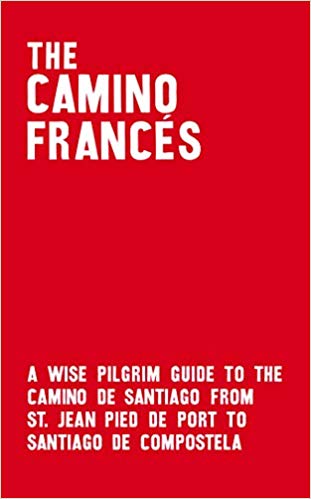
Wise Pilgrim: Various Routes, Michael Matynka Iglesias
Most of the guides have recent editions.
Iglesias resides in Spain and has produced a series of guidebooks and apps (more on the apps below). These books are slimmer than the above guides. They cover less prep and culture info, cutting to the chase with practical on-the-ground information.
Iglesias sells physical copies from his own website and eBooks from various sources, including the Camino community and Amazon. He’s produced guides for the Camino Francés, the Portugués from Lisbon, and the Primitivo.
Iglesias’ author profile on Goodreads.
Niche Guidebooks
Beyond the guidebook series, there are many one-off books that have been published to help you plan and execute your Camino. The following are listed in publication order, for books published in the past 10 years.
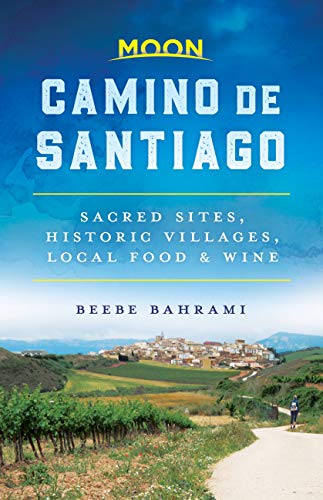
Moon Camino de Santiago: Sacred Sites, Historic Villages, Local Food & Wine, Beebe Bahrami
2022 edition
Bahrami is also the author of The Way of the Wild Goose, which is featured on our Camino memoirs page. The Moon Guide covers the Camino Francés through to Finisterre and Muxía. In addition to the usual stages, lodging and mapping info, Bahrami pays particular attention to food and culture.
Bahrami’s author profile on Goodreads.

The Camino de Santiago: 150 Questions and a Puzzle to Solve, Héctor Oliva
2022 edition
This extensive FAQ was originally published in Spanish during the Jacobean Year in 2021. It’s now available in English and ready to become a useful tool for pilgrims all around the world – before, during and after their Camino. This book is full of history, culture, religion, practical tips, and amazing facts.
Oliva’s author profile on Goodreads.
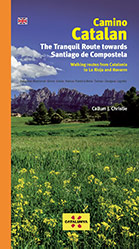
Camino Catalan. The Tranquil Route towards Santiago de Compostela, Callum Christie
2021 edition
The Camino de Santiago trails and routes in this Camino Catalan guide are amongst the quietest and most attractive of any to be found in Spain. They afford the traveler time to reflect while enjoying the surrounding countryside and the friendly folk who inhabit it. The guide covers over 1,600km of detailed notes for six interconnected routes, with color maps, albergue/hotel information, and historical notes of interest.
Christie’s author profile on Goodreads.
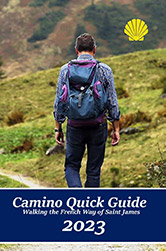
Camino Quick Guide: Walking the Way of Saint James, Juan Martin Garcia
2020 edition
To walk the Camino is a crazy but rewarding adventure. To do the Camino is to walk, nothing more. Walking is not running or climbing, but neither is it strolling at the mall. A book for readers who are considering it, this book will be a help in making informed decisions and planning it well. (Also available in Spanish).
Garcia’s author profile on Goodreads.
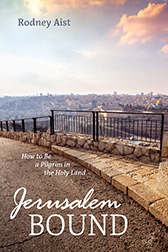
Jerusalem Bound: How to Be a Pilgrim in the Holy Land, Rodney Aist
Jerusalem Bound offers the traveler biblical, historical and contemporary images of pilgrim life. Integrating historical sources, on-the-ground experience and the voices of global pilgrims, Aist presents an approach to pilgrimage, explores pilgrim identity and the Holy Land experience, offers ideas for Holy Land travel and encourages pilgrims to focus upon the Other as much as themselves.
The book discusses material that is seldom addressed: the motives of Holy Land pilgrims, the history of the Christian Holy Land, understanding the holy sites, pilgrim practices, material objects and the challenges of Holy Land pilgrimage.
Aist’s author profile on Goodreads.
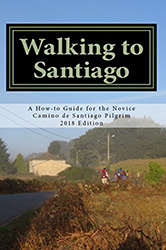
Walking to Santiago: A How-To Guide for the Novice Camino de Santiago Pilgrim, Ryan Tandler
2019 edition
Tandler offers everything you need to know to make informed decisions about your Camino. It includes tips on when to go, how to get to there, what to pack, personal health and safety, language, money and more.
Tandler’s author profile on Goodreads.
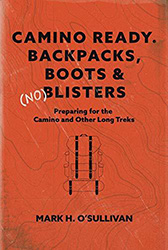
Camino Ready. Backpacks, Boots and (No) Blisters, Mark O’Sullivan
2019 edition
Camino Ready is for anyone thinking about or planning to do a long walk, which would include the Camino. The focus is on preparation leading to the best chance to successfully reach the destination pain- and injury-free. Many fail to complete the walk. Mark has walked five Camino routes in France, Spain and Portugal as have the other contributors. The book will help you prepare for the Camino and similar long-distance pathways.
O’Sullivan’s author profile on Goodreads.
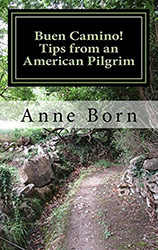
Buen Camino! Tips from an American Pilgrim, Ann Born
2017 edition
A collection of Camino preparation essentials and a companion to your walk. Not a guidebook, no maps, not a step-by-step, no long-winded history – just lots of little stories and helpful tips from a veteran American pilgrim. Intended for the first-time pilgrim and focused on how to plan, where to stay, how to pack, what not to miss, and how to have a Buen Camino. Updated for 2023.
Born’s author profile on Goodreads.
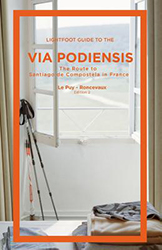
Lightfoot Guide to the Via Podiensis, Angelynn Meya
2016 edition
The Lightfoot Guide to the Via Podiensis follows in the footsteps of pilgrims who since the 10th-Century have crossed France on their way to the shrine of Saint James. It is a contemporary guide to one of the most popular hiking trails in France: the 774-km route from Le Puy-en-Velay to the Pyrenees, the starting point of the Spanish Camino.
The guidebook has detailed stage descriptions, topo and city maps, elevation profiles, accommodations and historical and cultural information.
Meya’s author profile on Goodreads.
Camino de Santiago Apps

Wise Pilgrim App
In addition to Michael Matynka Iglesias’ guidebooks (noted above), he’s also developed a series of apps for the Camino. Wise Pilgrim includes towns (with services), updated listings for a variety of lodging (with contact info), offline mapping, stage mapping, alternative routing options and an elevation profile.
He offers a lite version that covers all routes (this is useful if you are researching routes). He then has individual apps for a small fee, which include the Camino Francés, the Finisterre/Muxía route, the Portugués (all variants), del Norte, the Primitivo, the Via de la Plata, the Invierno and the Inglés.
Each version has a similar logo to the above, but they are different colors.
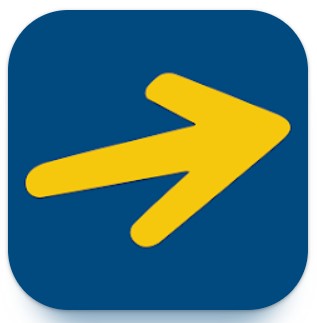
Buen Camino App
This app is also sometimes called the “Guide of the Way of St. James”, so be sure to note the app logo above and download the correct one.
This app is free and it includes basic features like towns, distances, real-time mapping (and offline use), lodging information and contact info, and a stage planner.
You can download the following routes into the app: the Francés, Baztan, del Norte, Primitivo, Aragonés, Inglés, San Salvador, Via de la Plata, Olvidado and the Portugués.
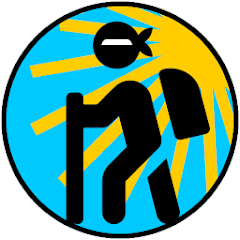
Camino Ninja
This app is free and it includes distances and elevations between stages that you can select, lists the services available in towns, has information on lodgings/albergues with contact info, and a map (but not for offline use).
The app offers information on the following routes: Camino Francés, Portguese (Official, Central, Senda Litoral, Spiritual Variant and Tomar-Nazaré), Finesterre/Muxía, San Salvador, Via de la Plata, Sanabrés, Inglés.
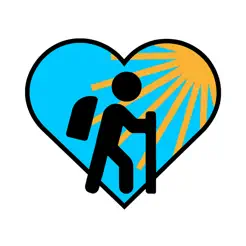
Camino Love
This app is free but requires a log-in. It includes general information on more than 300 Camino pilgrimage routes and as such is designed as much for planning and discovery as it is for on-the-ground logistics. You can create tailored stages, find accommodation (and book from the app).
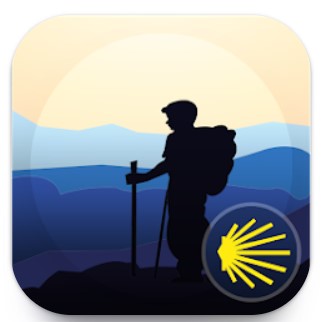
TrekRight (Trekopedia)
This app offers more historical and cultural context than some of the other apps. In addition, they have lodging info with phone/email, towns (and services), alternative routes, and stage-by-stage elevation maps. The app is available for the Camino Francés and Finisterre/Muxía.
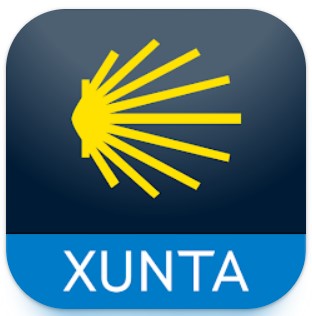
Xunta de Galicia: Way of St. James in Galicia
This app was developed by the Galician government to support pilgrims on the multitude of routes that pass into Galicia. It includes the “official” routing (with map), albergues, tourism resources, weather and info on health centers.
The app includes the Galicia’s portions of the Camino Francés, the Finesterre/Muxía route, the Portugués (including the Spiritual route), del Norte, the Primitivo, the Via de la Plata, the Invierno, and the Inglés.

Far Out Guides
Far Out is formerly Guthook guides. They have long-distance hiking guides for many routes in addition to the Camino. They have offline mapping with distances and an elevation profile, noting some albergues and points of interest. Their guide works for the Camino Francés and del Norte.
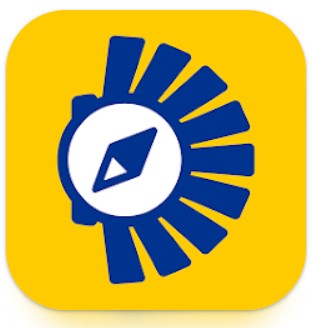
Camino Assist
Camino Assist is primarily useful for planning stages and has routing information for the Camino Francés and the Aragonés.
Other Useful Apps & Sites
Gronze.com is not an app, but it’s an extremely useful site for mapping stages and find lodging for many Camino routes, including some that don’t have dedicated guidebooks. The site is in Spanish, but you can set your browser to translate.
Godesalco.com is also a great Spanish-language stage planning tool. It doesn’t offer info on lodging and services. But if you are a planner, you can play around with it in advance and roughly map out your stages.
Be mindful if you set either of the two above sites to “translate”, the browser will also attempt to translate place names, which won’t jive with the on-the-ground reality.
In addition to Camino-specific apps, there are other tools that can be helpful on your pilgrimage. The AlertCops app is a citizen security alert service used by the Spanish police. If you install and activate it, and then find yourself injured or in need of police help, the app will help them find you.
Organic maps, Wikilocs, Topo GPS and AllTrails all offer GPS mapping services (with offline options).
The WhatsApp app is a very popular calling and messaging app used internationally. This can be used on either a cellular plan or wifi and you can use it to make accommodation reservations and to stay in touch with your new pilgrim friends or family back home.
You can also “call” home without international fees by using apps like Facebook Messenger, Facetime, Google Meet or Zoom.
What About Wifi and Data?
Many bars, hotels and even albergues offer free wifi (pronounced “wee-fee”). Check with your cellular service provider about options you have when traveling.
Some carriers, like T-Mobile, include international data and others offer a plan that you can add to your phone. If your phone is unlocked (ie: paid off), you can also purchase a local SIM card at the airport or in major cities. When in doubt, keep your phone in Airplane Mode to avoid surprise mobile phone bills when you get home.
Prepare for Your Camino
Be prepared and request your pilgrim credential from us before you depart.
- More advice for planning your Camino— an FAQ with first-timer tips.
- Guidance for what to expect once you’re on the Camino, with tips for lodging, food, how to plan your stages and other practical considerations.
- A complete pilgrim packing list.
- Info on cycling the Camino.
- Get inspired by reading books or watching movies about the Camino.
- Join a local chapter to participate in training hikes and engage with like-minded pilgrims.
- Join our Facebook group and get all of your questions answered.
Rev 06/20/24

